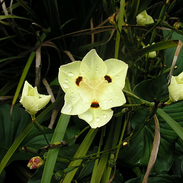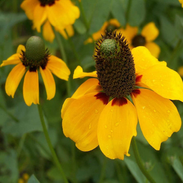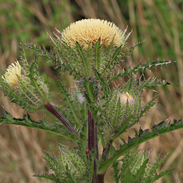
Hairy Vetch (Vicia villosa), with its delicate climbing tendrils and clusters of vibrant purple flowers, is widely celebrated as a cover crop and forage plant. Native to Europe and Asia, this legume enriches the soil, supports sustainable agriculture, and provides forage for livestock. However, its significance extends beyond agriculture—Hairy Vetch has a historical connection to traditional medicine, hinting at its potential for healing.
Traditional Uses
Though not as renowned for its medicinal properties as some plants, Hairy Vetch has been employed in traditional medicine systems for various purposes:
Respiratory Support: Used traditionally to address coughs, bronchitis, and other respiratory ailments, potentially due to expectorant or anti-inflammatory properties.
Skin Health: Applied topically to soothe skin irritations, rashes, and minor wounds.
Eye Health: Utilized as an eyewash to relieve inflammation and irritation.
Women’s Health: Believed to aid in regulating menstruation and addressing gynecological concerns.
Potential Benefits and Modern Research
While scientific research on Hairy Vetch’s medicinal properties remains limited, studies on its chemical composition and related Vicia species suggest potential therapeutic benefits:
Antioxidant Activity: Contains compounds with antioxidant properties, which can help protect cells from oxidative damage and support overall health.
Anti-inflammatory Effects: Evidence from Vicia species indicates anti-inflammatory activity, aligning with its traditional use for respiratory and skin conditions.
Nutritional Value: As a legume, Hairy Vetch provides protein, fiber, and essential minerals, contributing to its health benefits when consumed appropriately.
Cautions and Considerations
While Hairy Vetch shows promise, it is essential to approach its use with caution:
Limited Research: The safety and efficacy of Hairy Vetch for medicinal purposes are not well-established.
Allergic Reactions: As with any plant, some individuals may experience allergic reactions.
Pregnancy and Breastfeeding: Pregnant and breastfeeding individuals should avoid medicinal use due to a lack of safety data.
Cyanogenic Glycosides: Hairy Vetch, especially its seeds, contains cyanogenic glycosides, which can release cyanide when ingested in large amounts. Proper preparation and consultation with a healthcare professional are critical.
The Future of Hairy Vetch
While its role in agriculture is well-documented, Hairy Vetch’s traditional uses and bioactive compounds suggest exciting potential for future natural medicine research. Unlocking its therapeutic properties could lead to innovative applications in respiratory health, skin care, and more.
Disclaimer: This article is for informational purposes only and is not intended as medical advice. Always consult a qualified healthcare professional before using any herbal remedies.












